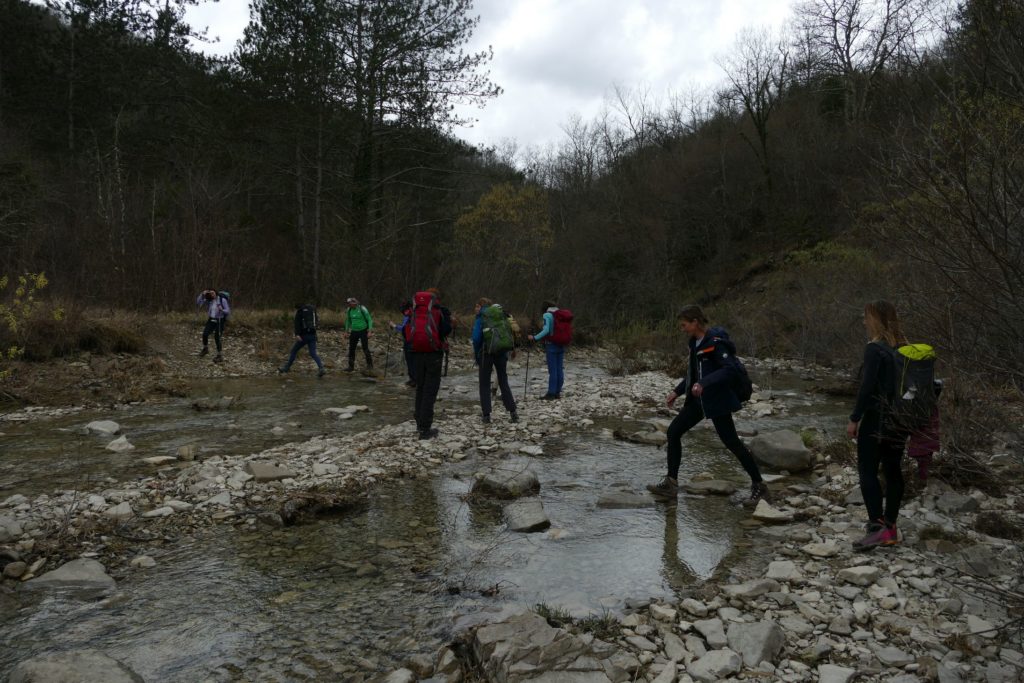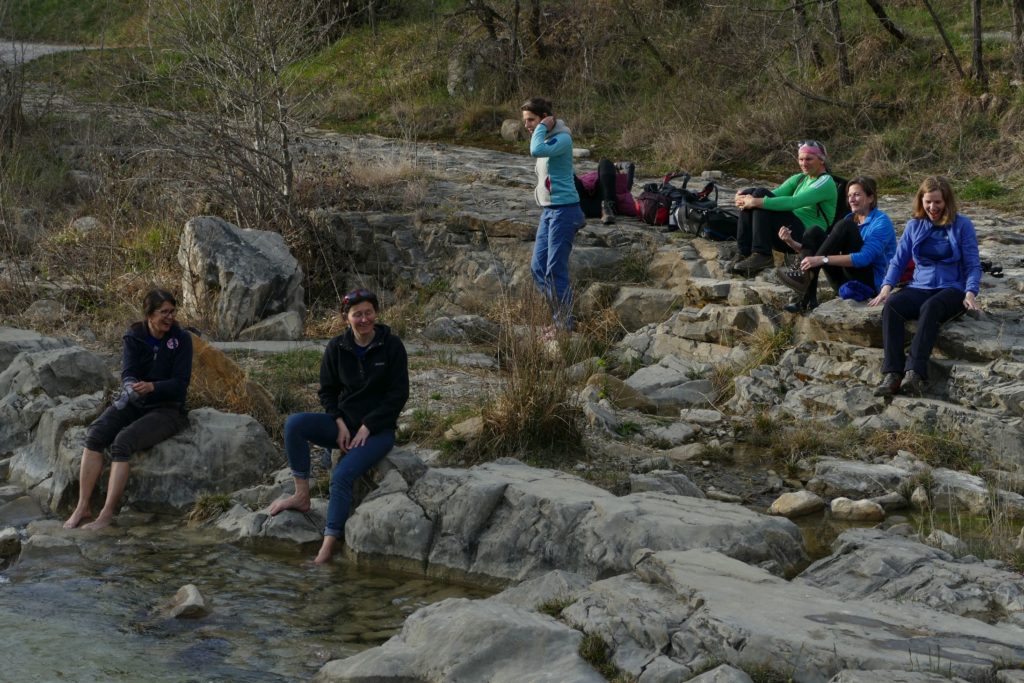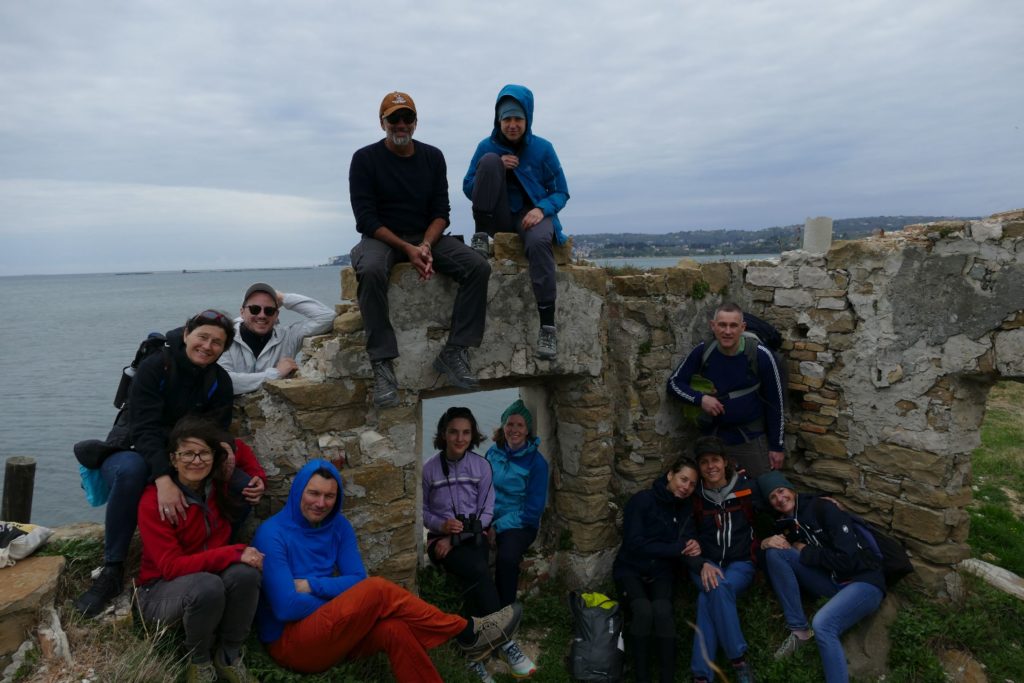Walking seminar: the valley of the rivers Dragonja and Rižana in Istria
Between March 30 and April 1, 2023, a three-day international walking seminar was held in Istria, in the valleys of the Dragonja and Rižana rivers, as part of the project Route biographies: walking and writing as methods for researching border regions (ARRS, J6-4611). Twelve participants took part. Ten participants from the Research Centre of the Slovenian Academy of Sciences and Arts (ZRC SAZU): Nataša Rogelja Caf (project leader), Martina Bofulin, Nataša Gregorič Bon, Ana Jelnikar, Urša Kanjir, Lucija Klun, Špela Ledinek Lozej, Jernej Mlekuž, Primož Pipan, Ana Reberc. They were joined by two international guests: Igor Rogelja (University College London, United Kingdom) and Nick Shepherd (Aarhus University, Denmark). On the first two days, the participants hiked in the valley of the Dragonja River from its source to its mouth into the Adriatic Sea, while the third day was dedicated to hiking along the lower reaches of the Rižana River. The entire route was divided into three stages: Poletiči – Puče (21 km), Puče – the mouth of the Dragonja River into the Bay of Piran by the Sečovlje salt pans; Fontanigge (19 km), and the shell ponds near St. Catherine; Ankaran – the hamlet of Miši on the bank of the Rižana River; Dekani (12 km).

Start of the hike in the village of Poletiči. Descent into the Dragonja Valley. After a few kilometres along the Dragonja River on the Path of the Heart, ascent to the village Trebeše above the Dragonja Valley. Urška Klančar from the tourist farm Marima gives a short talk about the problems of agriculture in the upper part of the Dragonja Valley. Passing the Stranica waterfall on the Path of the Heart, the hike circles the valley of the Stranica stream and descends through the village of Pavliči to the Mazurin mill on the Dragonja River.

It continues to the Zankolič mill, where the group is met by Irena Vujanovič, a member of the cultural-artistic group Ljudje z reke (People from the river) and other cultural and social initiatives that were active along the Dragonja River from the 1980s to the late 1990s. The trail leads to Škrline – the confluence of the Dragonja and Rokava rivers – and then to the village of Puče, where a short evening workshop is held.

The second stage leads to the more populated lower part of the Dragonja Valley. We walk along macadam, dirt roads along the river and along the barbed wire or barbed wire panel fence – the Slovenian response to the migrant crisis in 2015 – past the Grič Stena natural monument near the village of Dragonja, past the former Dragonja international border crossing between Slovenia and Croatia (Croatia joined the Schengen area on January 1st, 2023), along the regulated riverbed of the Dragonja River to the former international border crossing Sečovlje and along the edge of the salt pans of Sečovlje (Fonatnigge area) to the outflow of Dragonja into the Bay of Piran. Historian Flavio Bonin from the Sergej Mašera Maritime Museum Piran presents the changing landscape of the Sečovlje salt pans. The second evening workshop: the hikers draw experiential maps to reflect on their day.

On the third stage, the group is joined by archaeologists Maša Saccara from the Regional Museum of Koper and Maruša Bizjak. The hike continues from the shell dune in St. Katarina (Ankaran), along the northern distributor of the Rižana River, to the top of Sermin, past Bivje, along the Rižana River, to the hamlet of Miši (Dekani). A short final reflection after a total of 52 kilometres was led by Nick Shepherd and Nataša Rogelja Caf at Bordon Farm. After Mojca Bordon showed us the mill along the Rižana River, she prepared a typical Istrian minestrone/soup, bobiči.
